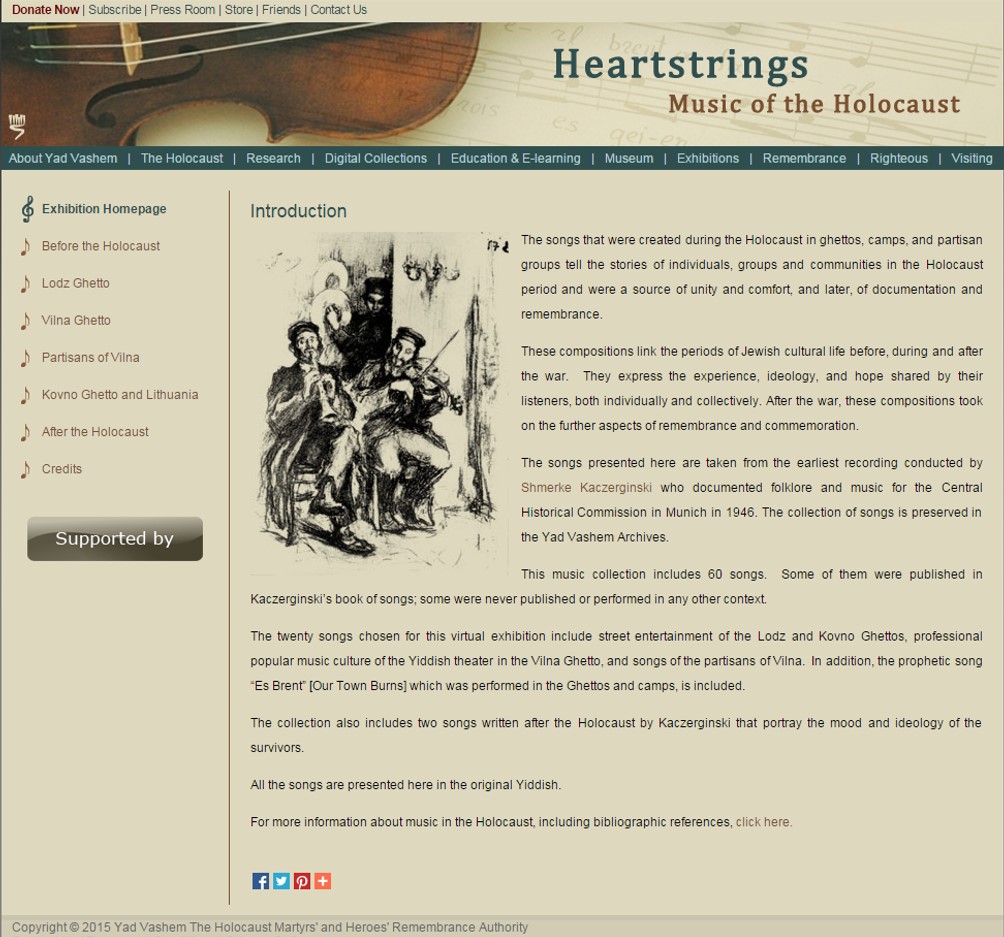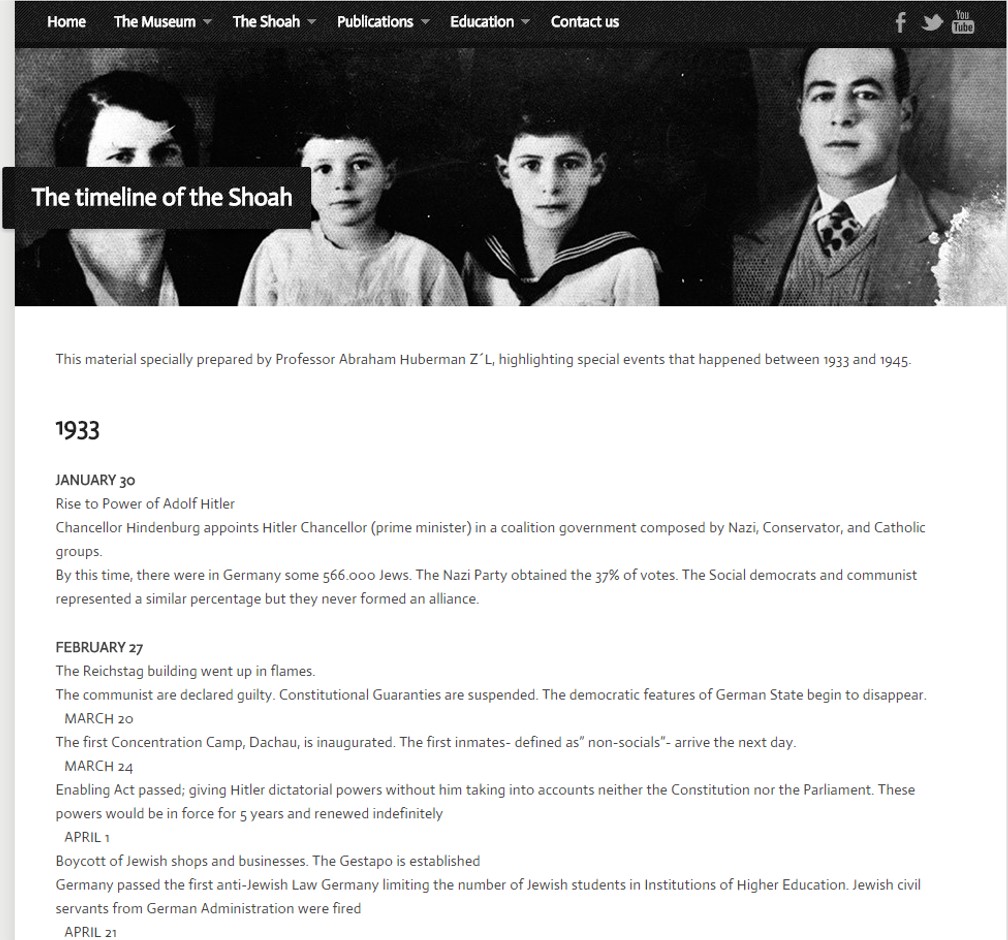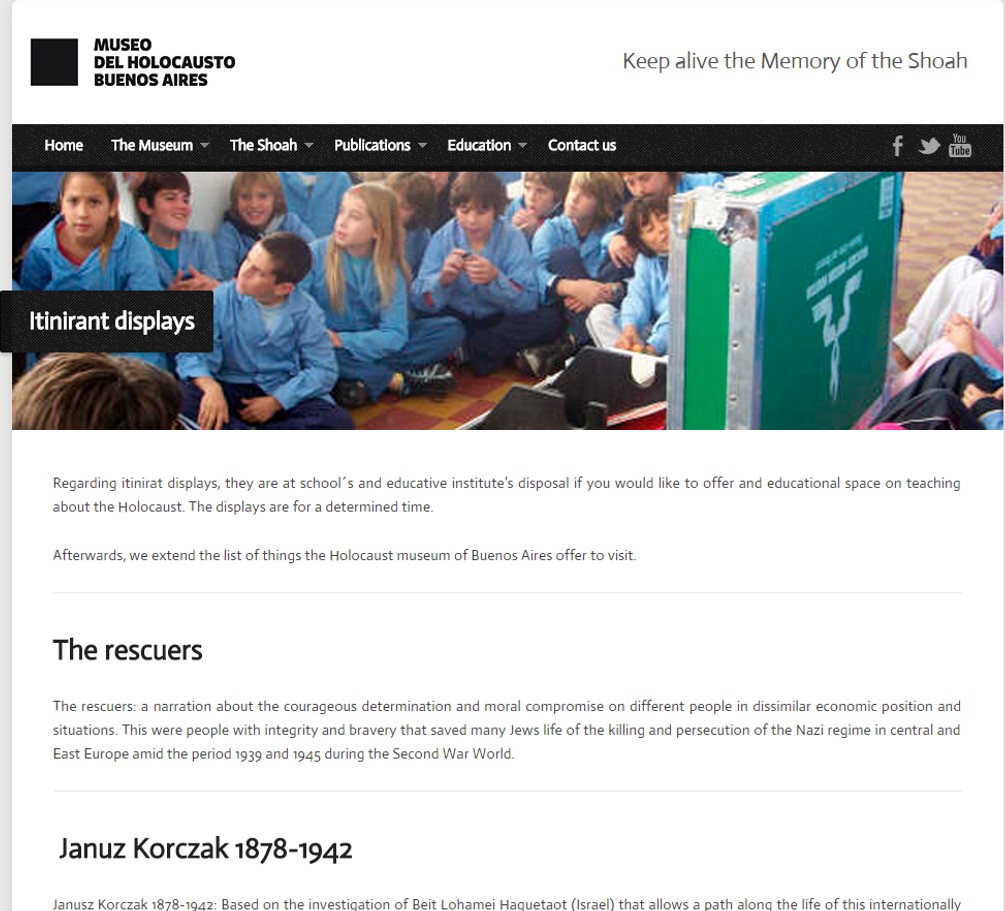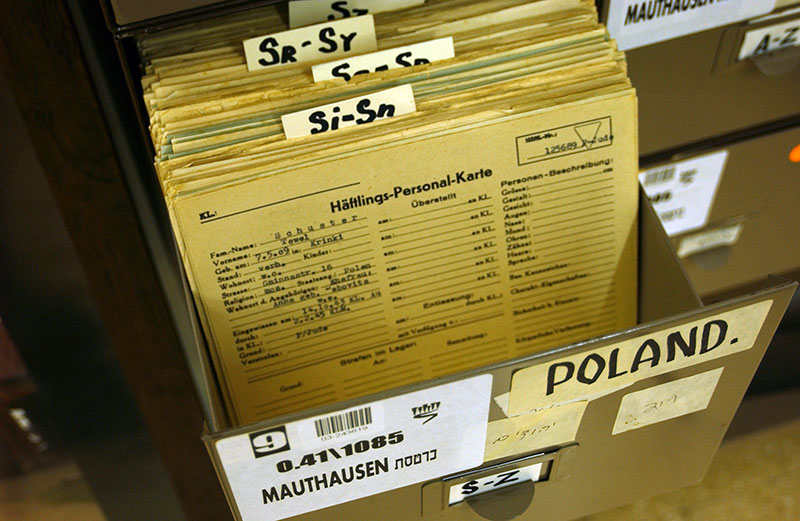[iframe src=”https://www.google.com/fusiontables/embedviz?q=select+col2+from+1185mPHw5odMMS98glU6mdkEV6e7pXXim1A2HQQHz&viz=MAP&h=false&lat=6.028514&lng=-29.240478&t=1&z=2&l=col2&y=2&tmplt=2&hml=TWO_COL_LAT_LNG”]
Yad Vashem, Jerusalem, Israel
A video on the Yad Vashem website home page describing the museum’s mission
“And to them will I give in my house and within my walls a memorial and a name (a “yad vashem“)… that shall not be cut off.” – Isaiah, chapter 56, verse 5
The Yad Vashem museum, located in Israel, is one of the most famous institutions memorializing the Holocaust, and its website is also superior. The main goal of the website is to memorialize the Holocaust by educating current and future generations of Jews about it. With this in mind, the museum focuses on the Jewish story the most on its website and does not include other marginalized groups in its definition of the Holocaust, which is a possible source of bias. However, the website also strives to be accessible to a variety of different viewers by making many materials available in multiple languages. The website is also well-organized: there are tabs across the top that, when hovered over, bring up a drop-down menu of more specific topics within the subject of that tab.
The museum’s archives boast a collection of over 154,000,000 pages from Jewish organizations and well as government and legal entities. Many of these collections are digitized and available on the museum website, which is an excellent resource for those who are unable to visit the museum in person.
Archival Collections at Yad Vesham
In keeping with its goal of education, the Yad Vesham website also contains a variety of teaching materials. By hovering over “The Holocaust” tab and clicking on “About the Holocaust,” relatively uninformed website visitors can gain a wealth of information about the Holocaust, from the events leading up to it to its aftermath. Visitors with a greater knowledge of the Holocaust can delve into more specialized topics by clicking on materials under the “Exhibitions” and “Education & E-Learning” tabs. For example, one of the educational highlights of the Yad Vashem site is its collection of online exhibitions for interested viewers.

Holocaust Museum of Buenos Aires, Argentina
Museo del Holocausto de Buenos Aires
“The central mission of the Holocaust Museum is to keep alive the Memory of the Shoah and its consequences for the whole humanity. Its function is to investigate, to transmit, to inform, to disseminate and to educate, to make aware the society of the serious consequences of the racism, discrimination, xenophobia and anti-Semitism.” – Mission of the Museo del Holocausto
The Holocaust Museum of Buenos Aires is located in Argentina, the country in which Adolf Eichmann and many other Nazis went into hiding after World War II. Though the English version of the website has certain strengths, its weaknesses make it hard for viewers to learn about the Holocaust. One of the website’s strengths is that it is well-organized in the same format of tabs and drop-down menus that the Yad Vashem website has. Another positive feature of this site is that it offers educational materials, including a definition of the Holocaust, a question-and-answer section, and a timeline that goes from Hitler’s rise to power to Germany’s surrender at the end of World War II. These educational features are useful for relatively uninformed visitors, and the detailed timeline will probably also be a useful reference for those with more advanced knowledge about the Holocaust.

The main weaknesses of the English version of the website, however, are that the translation is not very good in some areas and that there are many pages that are unavailable. Many times users will be met with a “Page not found” error when trying to access features on the English version of the website. For example, publications, testimonies, and pages about current exhibits cannot be accessed. This poses some serious issues for viewers of the website who do not speak Spanish, because some of these features are only available in the Spanish version of the website (such as the testimonials). It furthermore makes it very difficult to figure out what archival sources sources are being used by the museum and thus brings the integrity of the institution into question.

